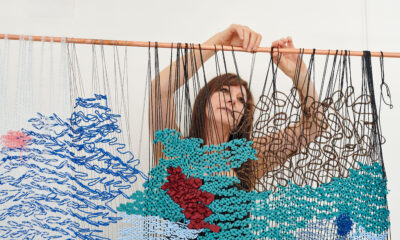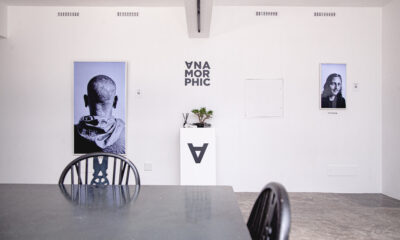
Israel
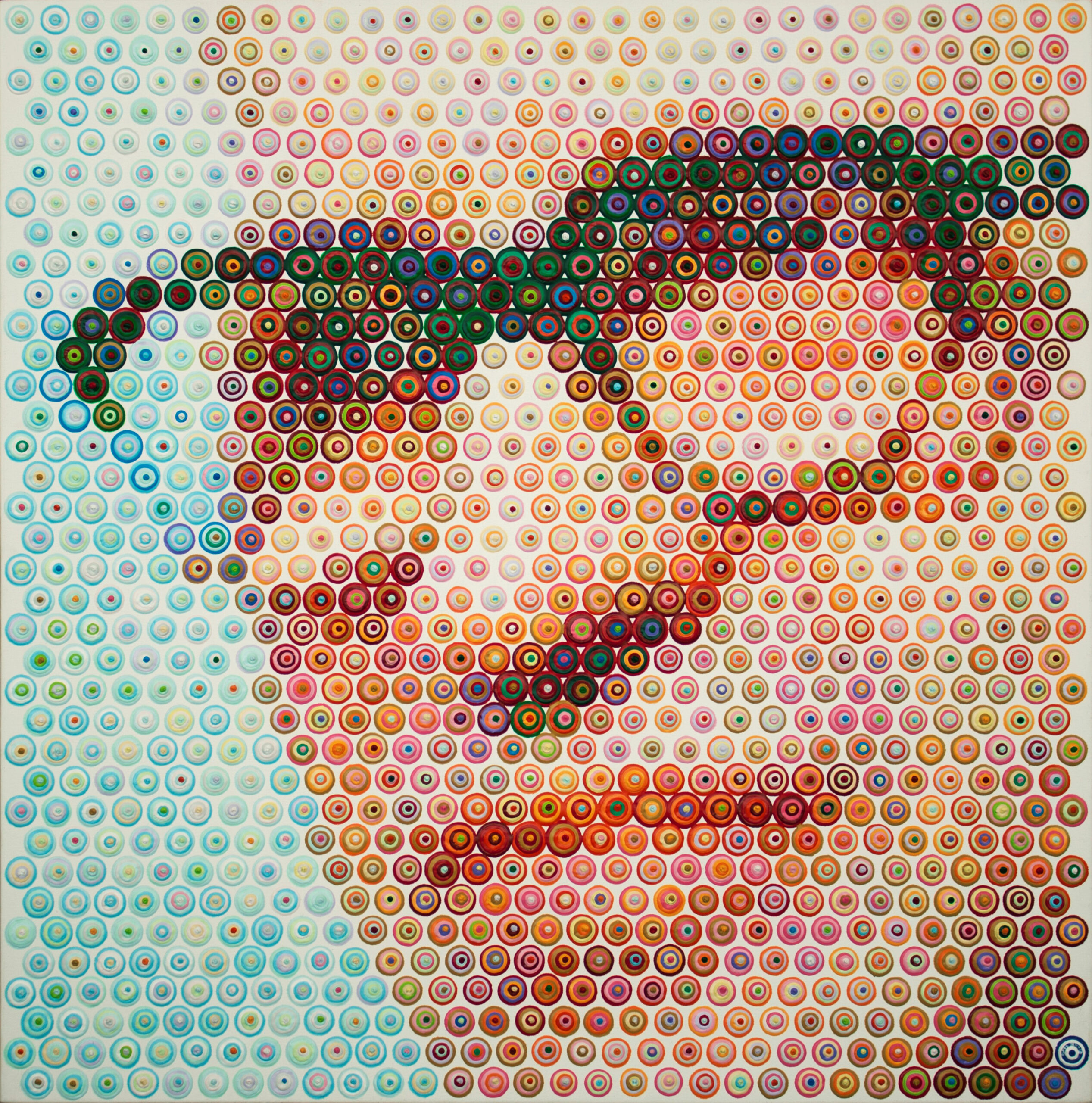
Israel’s prime ministers canvassed in full colour
A Capetonian artist and a South African oleh have combined forces to create a unique series portraying 12 Israeli prime ministers as they’ve never been seen before.
Thanks to former Johannesburg businessman, now-Netanya resident Myron Zaidel, this collection of pointillist portraits will be displayed for the first time, in Jerusalem, as part of the country’s 75th anniversary celebrations. The portraits, titled Prime Ministers in Perspective, are the creation of Gavin Rain, one of the world’s leading pointillist artists.
“My objective was to create something of value that was unique and transportable in the international language of art,” says Zaidel. “As a Zionist, I wanted to take a period of Israel’s history, to focus on Israel’s first 12 prime ministers up to the end of 2020. The art form itself was appealing to me – you can look at the picture many ways, and if you look at it the right way, you see the full picture.”
After admiring Rain’s pointillist portrait of the Lubavitcher Rebbe created for Chabad in Johannesburg, Zaidel met the artist in 2019. They agreed on a 12-month project to spotlight 12 personalities who have shaped the country up to 2020 – David Ben-Gurion (two terms of office); Moshe Sharett; Levi Eshkol; Golda Meir; Yitzhak Rabin (two terms of office); Menachem Begin; Yitzhak Shamir (two terms of office); Shimon Peres (two terms of office); Ehud Barak; Ariel Sharon; Ehud Olmert; and Benjamin Netanyahu (two terms of office).
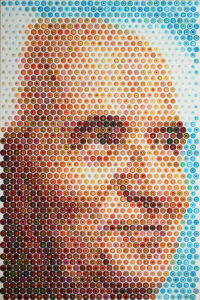
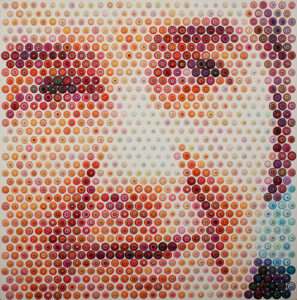
The idea originated when Zaidel was planning his aliya, and “wanted to have something that I could take from South Africa on my personal journey. Gavin’s art form is unique, and I believed that creating a collection of the portraits of all the prime ministers of Israel from 1948 to 2022 would be special.”
The series will be displayed for the first time in public in a four-week exhibition within the framework of the Jerusalem Biennale in the central space of the historic Sha’arei Tzedek Hospital.
Rami Ozeri, the founder and creative director of the Jerusalem Biennale says, “As part of Israel’s 75th anniversary celebrations and in times of dispute and polarisation, we’re honoured to exhibit this exquisite series of portraits in the Biennale Gallery. When taken together, they tell the collective story of a nation born. The pointillist technique sheds new light on these important figures and expresses the relation between their complete image and the countless components that create it.”
Rain came to develop his pointillist style in an unusual way. “One would think it was via inspiration from artists such as [Georges] Seurat, but actually it was via photography,” he says. “My grandfather was a landscape photographer, and I was his chief bag carrier when I was young. My interest in digital photography led me into exploring the pixel patterns that make up the image. What’s happening there? Aren’t we just losing information in all that dead space between pixels? My art comes from this thought process. However, it took me about two years to figure out how to do it.”
He says taking on this series was intimidating. “Portraits are serious business. You’re trying to capture an essence. But how? I don’t know these people. I’ll never know them. Political people have different sides to them – public and private. We all do, but I feel it’s more the case with politicians – it’s more polarised. I can read up about these people, but the person you’re trying to capture in that portrait is the private person. That isn’t easy.”
Each portrait took about three weeks to paint: “One week of mathematics and doubt, the rest painting and relief when it works!” All portraits are acrylic on canvas, one meter square, except for [David] Ben-Gurion, which is 1.8m x 1.2m to accommodate his iconic hairline. Each concentric circle on the white canvas is made up of five layers of colour.
A 50-page coffee table book, with text in English, Hebrew, and French, was created to accompany the exhibition and make the collection more accessible. The portraits aren’t for sale, and it’s hoped that the exhibition will travel to other cities around the world, eventually finding a permanent home in a leading Israeli institution.
“They were all challenging, but [Menachem] Begin was possibly my favourite because I’d never tried to do glasses before,” says Rain. “Glasses are thin, and that’s not easy in my style. I also wanted to try capturing that refraction of light on the cheek that gives the portrait character. Luckily, his glasses were quite thick, as was the style of the day, so I had a little room to play with.”
His advice to other South African artists looking to establish themselves is to “listen to all the advice that established artists give you, and then realise that none of it will apply. But find out what they struggled with. Remember that art is a conversation. You have an idea. It stays in your head. This is the actual art. The painting, sculpture, or installation is simply an expression of this art. Art is a conversation between you and the viewer or patron. Don’t forget this. It’s a conversation. Don’t just shout – you also need to listen.”
He emphasises that he couldn’t have done this project without Zaidel. “This is Myron’s vision. He’s the one that has a deep cultural interest in these leaders. Myron chose to explore and express them in this way. If there’s any appreciation or credit for this body of work, it’s owed entirely to him.”
Being the 75th anniversary of the state, “I found this series to be a perfect fit for premiering the collection in Israel,” says Zaidel. “I’ll enjoy sharing the collection with as many people as possible, and creating interest for the work to be exhibited elsewhere. I’m excited to play an active part of celebrating the occasion.”
For him, aliya was “difficult in that we have left our home and immediate close family in South Africa. However, it’s a positive move in that as a retired couple, there’s a better quality of life to be had. I believe our aliya was made in the time it was meant to be.”
If a suitable opportunity arose, he said he would consider bringing the collection to South Africa.
His advice to aspiring artists hoping to establish themselves is to “be original, be unique, be interesting, and do whatever you do with passion.”





